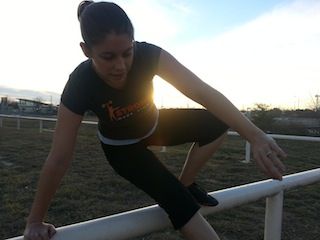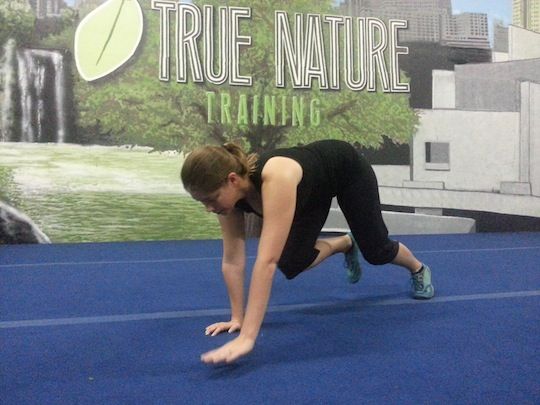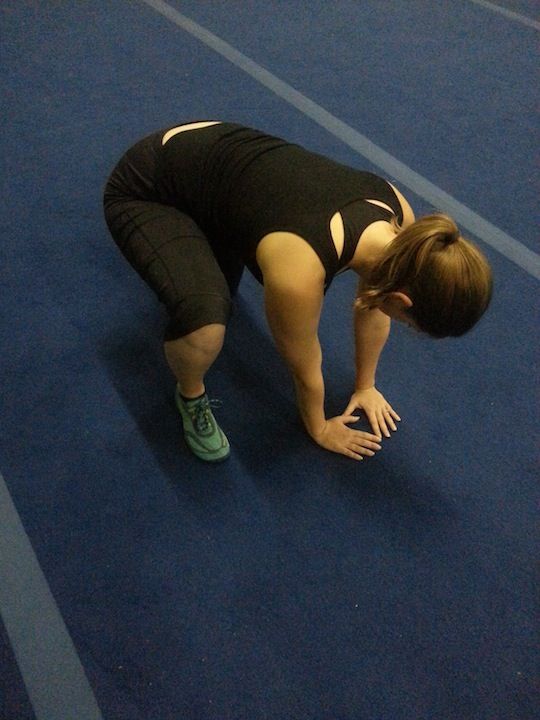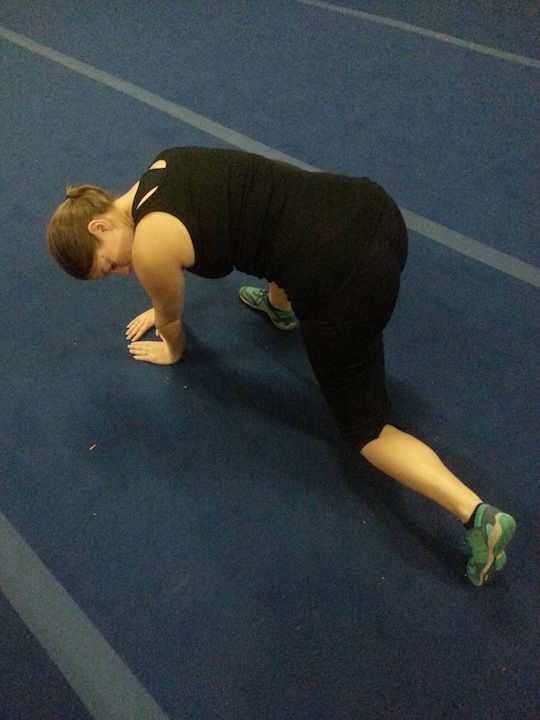Crawling, Balancing, Rolling: The Importance of Practicing Natural Movements
This is a guest post from Tracy Barksdale co-founder of True Nature Training. Tracy will be presenting at The Primal Blueprint Transformation Seminar and True Nature Training in Austin and Houston, Texas this coming May 4th and 5th.My job is essentially to get people to have fun. I am a Natural Movement and Parkour coach at True Nature Training who uses play and unconventional programming to get people active without realizing they are getting a workout. It’s so common to get stuck in our fitness routines. Push ups, pull ups, squats, and sprints are all obvious choices for a primal fitness program, but when we get bored or hit a plateau it can help to widen your repertoire to introduce new things.
 In many cases, this great “new thing” is actually very old. Natural movement is a movement philosophy based on natural human movements that we have evolved doing. Our ancestors had to crawl, climb, run, jump and more just to survive. Yet with our modern luxuries, we often don’t find ourselves needing to do these things as often. It’s not uncommon to hear someone proclaim with a hint of pride that they have not climbed a tree since they were kids, like it’s a sign of being a mature adult. Natural movements are not just for kids or those who are already active. Natural movement belongs to every human being, and it’s your duty to maintain proficiency in these practical movements because you never know when you may need to use them. Here are some movements that can benefit anyone regardless of age or fitness level.
In many cases, this great “new thing” is actually very old. Natural movement is a movement philosophy based on natural human movements that we have evolved doing. Our ancestors had to crawl, climb, run, jump and more just to survive. Yet with our modern luxuries, we often don’t find ourselves needing to do these things as often. It’s not uncommon to hear someone proclaim with a hint of pride that they have not climbed a tree since they were kids, like it’s a sign of being a mature adult. Natural movements are not just for kids or those who are already active. Natural movement belongs to every human being, and it’s your duty to maintain proficiency in these practical movements because you never know when you may need to use them. Here are some movements that can benefit anyone regardless of age or fitness level.Crawling
Crawling is amazing. You connect to the earth, it’s a whole body movement, and it requires coordination. Babies instinctively crawl yet once walking is established, crawling is rarely used. Quadrupedal movements (moving on all fours) have many practical applications. Crawling can be used for getting under something low like a table or car, avoiding a dangerous situation where you might need to duck and get out low and quick, or just lowering your center of gravity while on an unstable surface.
Let’s look at a basic bear crawl. To begin, start on the ground on your hands and knees. Your hands should be directly under your shoulders and knees under your hips. Bring your heels up so you can use your toes to move. Next, apply pressure in your hands and pop your knees off the ground around 4 inches. Your back should be roughly parallel to the ground. You want to maintain this level throughout your crawl. To begin crawling, move in a contralateral pattern (opposite hand and foot.) Move your right hand forward and left foot forward at the same time. Then switch. Left hand forward, right foot forward. Look in front of you to see where you are going, but only lift your head as much as necessary to see. Be careful not to let your knees flare out to the side. To make sure your knees are properly aligned, keep your knee in line with your elbow.
Balancing
Balancing is a skill that is rarely practiced yet is another very practical movement. The elderly especially can benefit from balance work, but why wait till you’re old? Train balance now because you never know when you may need to use it. Balancing is really the state of not falling. You’re balancing when you’re standing, when you’re lying down, and when you’re walking on a ledge. It’s about being in control of your body positioning.To practice balance, find a curb outside or grab a couple 2x4s to put in your house. Stand on the surface, find a tall proper posture, and look forward, not down. Use your feet (preferably bare feet) to feel your surface before you take a step. Keep your knees “soft” meaning not straight, but not completely bent. Keeping a slight bend in the knees allows for more control and encourages adjustments to be made in your knees, ankles and feet instead of flailing your arms to get balance which tends to be a waste of energy. Practice balancing forward, backward, sideways, crawling and any other ways you can imagine. Oh, and remember to breathe! Many people revert to shallow breathing or hold their breath while balancing. Make sure to practice diaphragmatic breathing at all times while balancing.
Rolling
When is the last time you rolled in the grass? Forward roll, barrel roll, backward roll? Besides being a fun and playful skill, it can also be a very practical skill to have. Rolling can be used to absorb impact when jumping from something high, or in case of tripping, rolling is often a better option than hitting the ground. Rolling requires coordination and is an excellent tool to further develop the vestibular system. For example, if you were in a situation where you needed to balance over something high, narrow and scary, you could very likely be under a lot of pressure and you could feel dizzy. Training the vestibular system further ensures that you are prepared for possible real world situations.To begin rolling, a movement pattern must first be established before being used in combination with falls and depth jumps. To get started, kneel down on one knee, hips up, not sitting on your back foot. Place your hands side by side flat on the floor next to your foot. Move your hands away from your foot and forward so that you are set up similar to the first picture below.
Next, twist your hands away from your front foot and look at your back foot in the same direction your hands are pointed, tucking your chin and getting your head out of the way to roll as in the second photo.


Last, push through your back foot raising your hips in the air. Your head should be out of the way from looking at your foot, and you are prepared to roll directly onto the shoulder. Keep pushing until you must roll over your shoulder. Do not roll over your neck or head.
When you come out of the roll, you should pass over the opposite hip as the shoulder your rolled on.
To finish, you should end in the same position you started in. So if you began with your right knee up, you should end in that position.
Check out this video sequence to see what I mean:
Play
Although technique is of course very important, it’s also vital that you have fun. It’s okay to jump around on rocks or climb some trees without thinking about the mechanics and exact techniques you should be using. Just remember Law #9 and Avoid Stupid Mistakes. Go outside with your kids or grab some friends and play tag. If you aren’t enjoying yourself and having fun, you won’t stick to it. Incorporating play into your movement practice is just as vital as working out and eating right.Play helps reduce stress, encourage movement, and in turn helps keep you refreshed and motivated to eat right. So make sure to do what you enjoy, laugh at yourself when you mess up, and get creative in whatever environment you find yourself in whether it be your office, a park, your house or the gym.
These movements can help you round out your training or even help you get moving again. Let your world be your playground and find ways to move everywhere. Hand rails, curbs, rocks, and playground equipment are all great opportunities for movement. Look to your community for natural movement practitioners or better yet, come join me for a Primal Blueprint Transformation Seminar. I’ll be teaching natural movement and this is an excellent way to get an introduction or refresher.